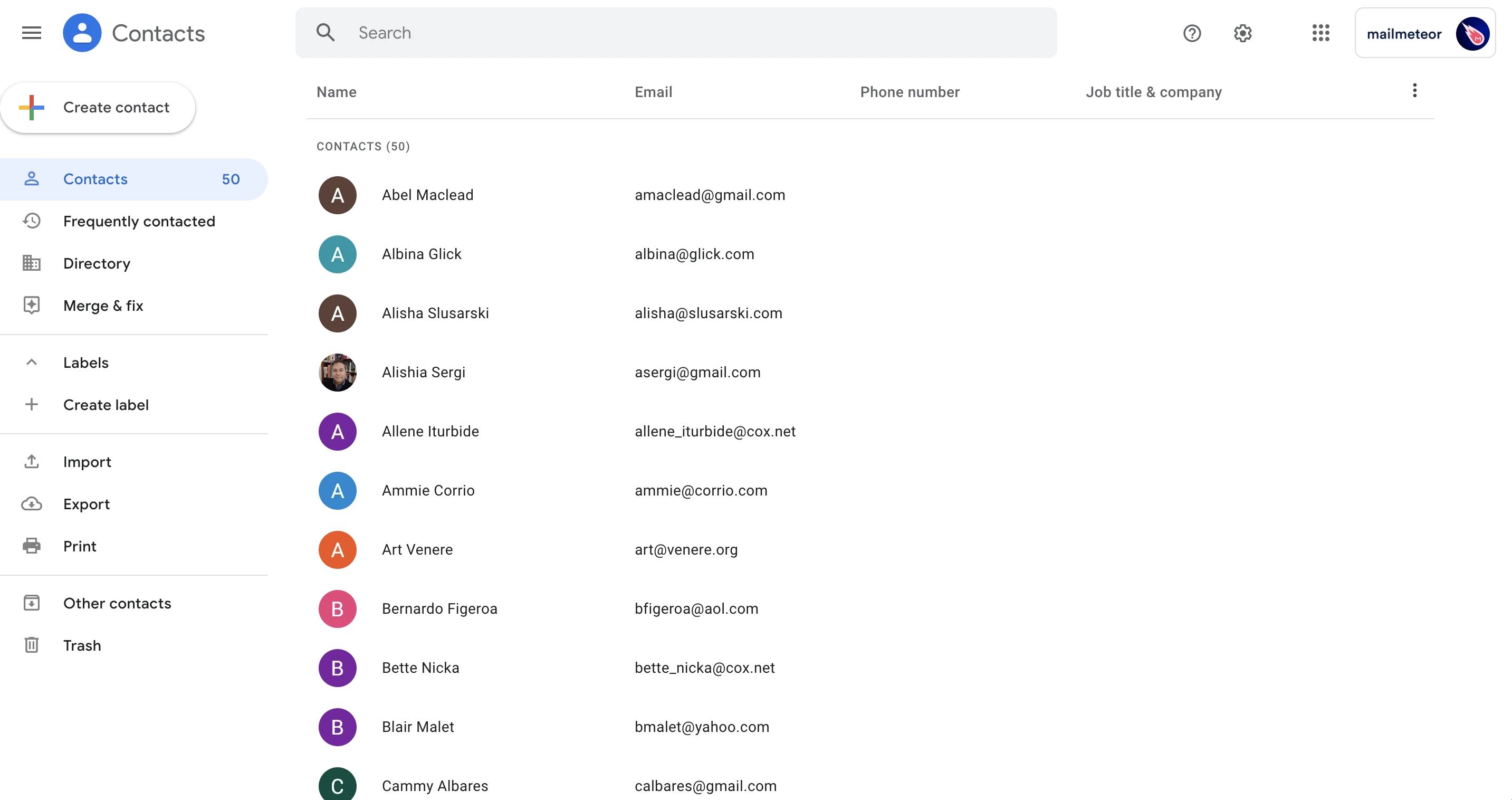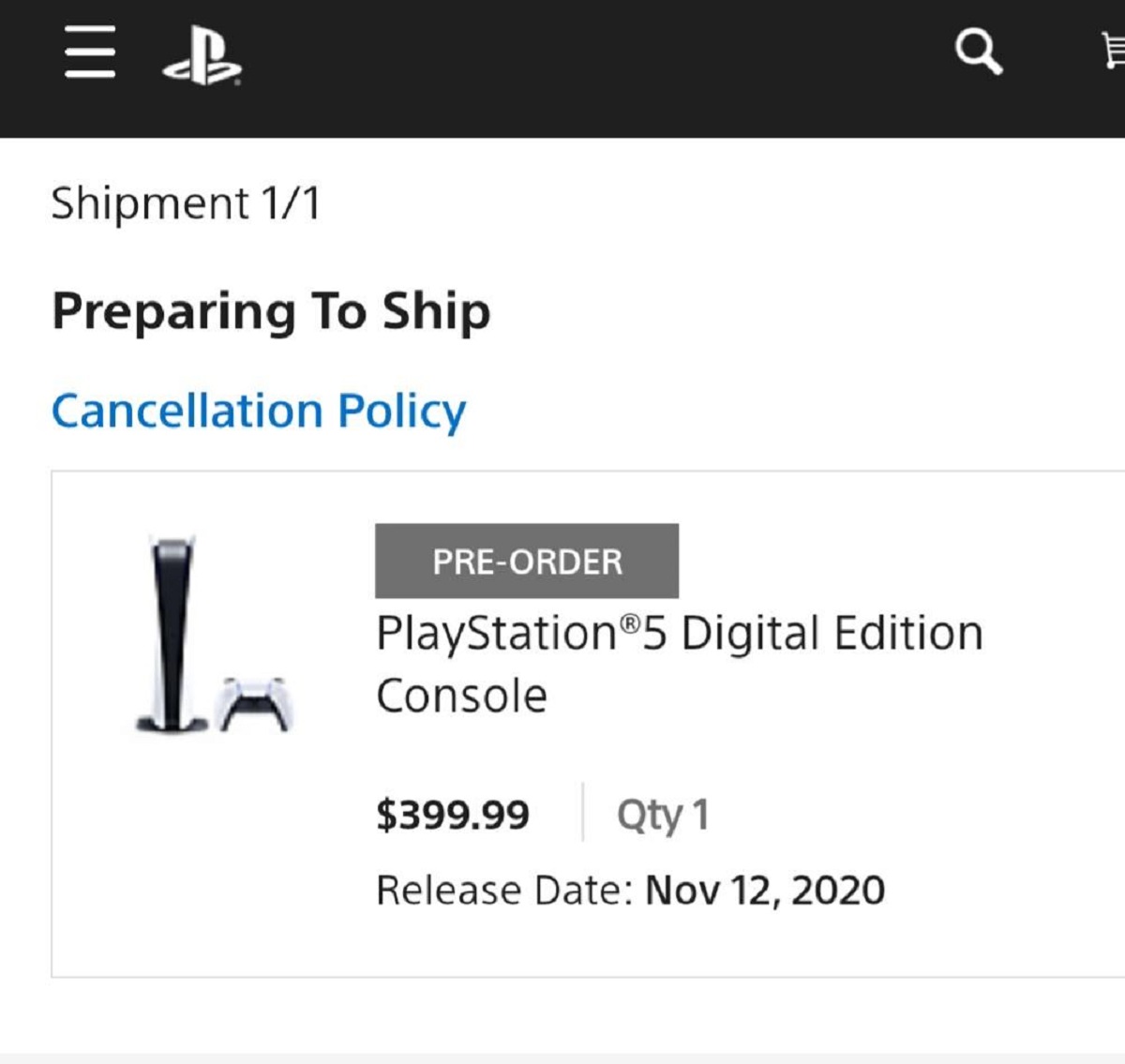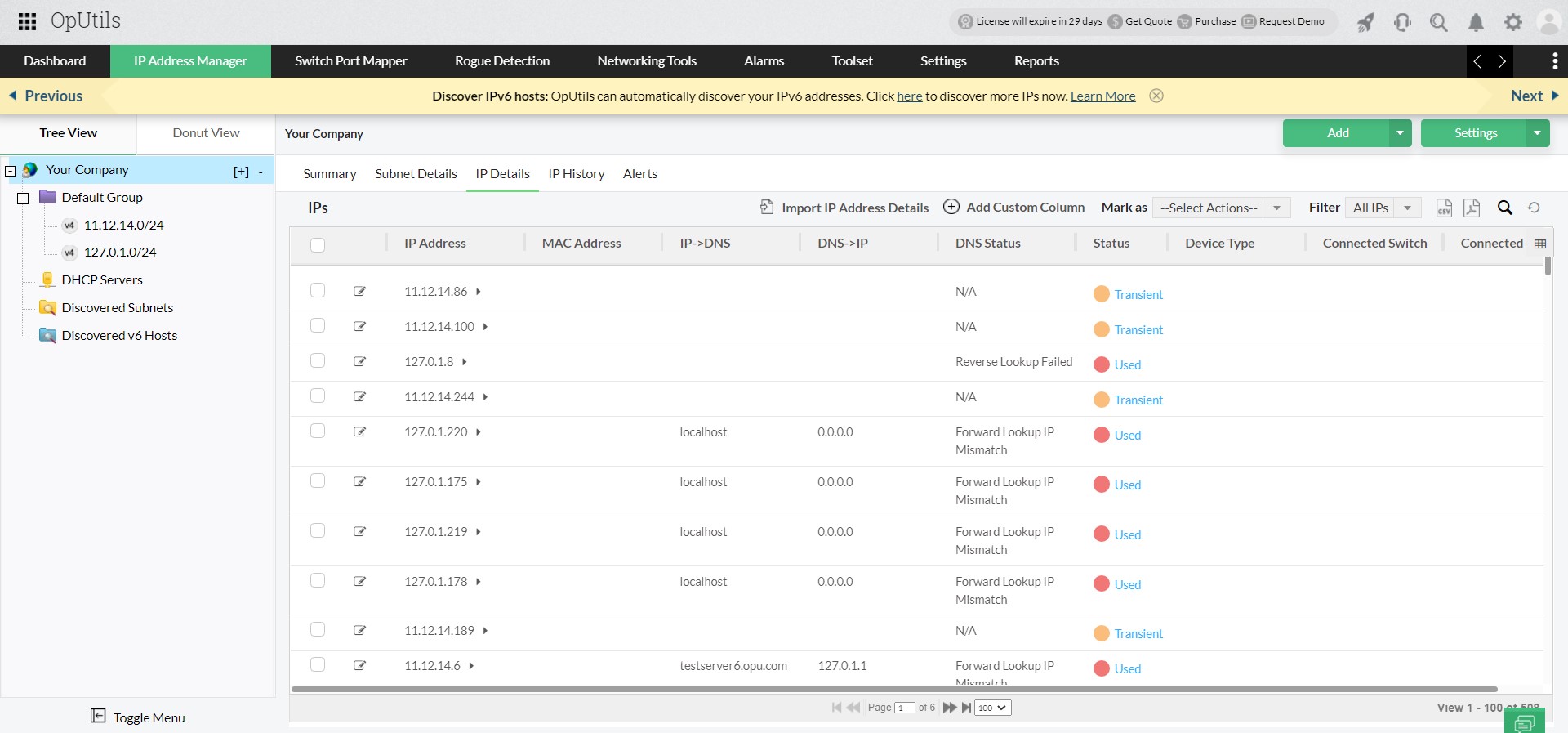Introduction
Welcome to the world of email tracking! In today’s digital age, email has become a crucial communication tool for both personal and professional purposes. However, have you ever wondered if your emails are being read and if your efforts are yielding positive results? This is where email tracking comes into play.
Email tracking is the process of monitoring the delivery, open rates, click-throughs, and engagement of the emails you send. It provides valuable insights into the effectiveness of your email campaigns, allowing you to make data-driven decisions and optimize your communication strategies.
Whether you are a marketing professional trying to gauge the success of your email campaigns or a salesperson keeping track of client interactions, email tracking is essential for measuring the impact of your efforts and making informed decisions.
In this comprehensive guide, we will explore the importance of tracking email, different methods for tracking, popular email tracking metrics, the best email tracking tools available, how to set up email tracking, tips for effective tracking, and solutions to common tracking challenges.
By the end of this guide, you will have the knowledge and tools necessary to effectively track your emails, monitor engagement, and improve your communication strategies.
Why Tracking Email is Important
Tracking email is vitally important for a variety of reasons. Let’s explore why it’s worth investing time and resources into implementing email tracking in your communication strategy.
Measure Effectiveness: Email tracking allows you to measure the effectiveness of your email campaigns. By tracking metrics such as open rates, click-through rates, and conversions, you can gain insights into what resonates with your recipients and make data-driven decisions to improve your email content and strategy.
Optimize Engagement: With email tracking, you can identify the most engaging elements of your emails. By tracking which links are clicked, how long recipients spend reading your emails, and which CTAs are most effective, you can optimize your email content to increase engagement and drive desired actions.
Improve Personalization: Tracking email enables you to gather valuable information about your recipients’ preferences and behaviors. By analyzing recipient engagement patterns, you can tailor your emails to individual preferences, delivering more personalized and relevant content that resonates with your audience.
Enhance Follow-up Strategies: Tracking email interactions provides valuable data for effective follow-up strategies. By knowing when recipients open your email, you can time your follow-up correspondence for maximum impact. Additionally, tracking clicks on specific links allows you to understand recipient interests and tailor your follow-up discussions accordingly.
Identify Opportunities for Improvement: Email tracking uncovers areas where your email campaigns can be improved. By analyzing metrics such as bounce rates and unsubscribes, you can identify potential issues, rectify them, and deliver more impactful emails to your audience.
Enhance Sales and Conversions: For sales professionals, tracking email interactions can significantly impact success rates. Knowing when your emails are opened and which content is being engaged with empowers you to identify warm leads, prioritize follow-ups, and improve the chances of converting prospects into customers.
Track Email Performance over Time: By consistently tracking your emails, you can measure performance trends over time. This allows you to identify patterns, gauge the success of your email campaigns, and implement strategies for continuous improvement.
Tracking email is integral to understanding recipient behaviors, optimizing engagement, and enhancing your communication strategies. With the insights gained from email tracking, you can increase the effectiveness of your email campaigns and drive better results.
Different Ways to Track Email
There are various methods available to track email and gather valuable insights into recipient behaviors. Let’s explore some of the most common ways to track email:
Read Receipts: Read receipts are a traditional method for tracking email. They allow the recipient’s email client to send a notification to the sender when the email has been opened. However, it’s important to note that read receipts rely on the recipient’s email client supporting this feature and the recipient granting permission for the read receipt to be sent. Therefore, read receipts may not always provide accurate tracking data.
Pixel Tracking: Pixel tracking is a widely used method for email tracking. It involves embedding a small, invisible pixel within the email. When the recipient opens the email, the pixel is loaded, and the tracking tool records this activity. Pixel tracking provides valuable insights into open rates and allows you to track when and how often your email is viewed.
Link Tracking: Link tracking involves inserting unique tracking links within your email content. When recipients click on these links, the tracking tool records this activity, providing you with data on click-through rates. Link tracking allows you to track specific actions taken by recipients and measure the effectiveness of your call-to-action (CTA).
Domain Tracking: Domain tracking involves tracking the domain of the email address rather than individual recipients. This method allows you to measure the overall engagement and open rates of emails sent to a specific domain. Domain tracking is particularly useful when targeting organizations or specific groups of recipients.
Email Tracking Software: Investing in dedicated email tracking software is another effective option. These software solutions offer comprehensive tracking capabilities, including open rates, click-through rates, and engagement metrics. They often provide additional features like email campaign management, A/B testing, and analytics to help you optimize your email marketing efforts.
CRM Integration: If you use a customer relationship management (CRM) system, integrating email tracking within your CRM can provide seamless tracking capabilities. This allows you to view email interactions, track engagement metrics, and manage your email campaigns all within your CRM platform.
Third-Party Plugins and Extensions: For those using email clients or web-based email services, there are several third-party plugins and extensions available that offer email tracking capabilities. These plugins often provide additional features such as email scheduling, templates, and analytics to enhance your email productivity and tracking.
Each method of tracking email has its advantages and limitations. Consider your specific requirements and goals when choosing the most suitable tracking method for your needs.
Email Tracking Metrics
When it comes to tracking email, various metrics provide valuable insights into the performance and engagement of your email campaigns. Let’s take a closer look at some of the key email tracking metrics:
Open Rate: The open rate is a fundamental metric that indicates the percentage of recipients who opened your email. It helps measure the effectiveness of your subject line, sender name, and overall email appeal. A higher open rate indicates better engagement and interest from your recipients.
Click-through Rate (CTR): The click-through rate measures the percentage of recipients who click on links within your email. It gauges the effectiveness of your email content, calls-to-action (CTAs), and the overall level of recipient engagement. A higher CTR indicates that your email has successfully motivated recipients to take action.
Conversion Rate: The conversion rate is a crucial metric that measures the percentage of recipients who take the desired action after clicking on a link in your email. This action could range from making a purchase to signing up for a service or filling out a form. Tracking conversion rates helps you assess the efficacy of your email campaign in driving desired results.
Bounce Rate: The bounce rate represents the percentage of emails that were not successfully delivered to recipients’ inboxes. Bounces can occur due to invalid email addresses, mailbox full issues, or technical errors. A high bounce rate may indicate issues with your email list quality or email delivery infrastructure and requires investigation to maintain good email deliverability.
Unsubscribe Rate: The unsubscribe rate reflects the percentage of recipients who opt-out and unsubscribe from receiving future emails. Monitoring the unsubscribe rate helps you gauge the relevance and value of your email content. A high unsubscribe rate may indicate that your emails are not meeting the expectations of your recipients.
Time Spent on Email: Some email tracking tools provide data on the average time recipients spend reading your email. This metric gives you an indication of how engaging and valuable your email content is. If recipients spend more time reading your emails, it suggests that they find the content interesting and engaging.
Email Client Metrics: Understanding which email clients your recipients use can be valuable information. Certain email clients may have limitations or restrictions on displaying certain content or tracking methods. By tracking email client metrics, you can optimize your email design and content to ensure compatibility and maximum engagement across different clients.
These are just a few of the essential email tracking metrics that can help you evaluate the effectiveness and impact of your email campaigns. By monitoring and analyzing these metrics, you can make data-driven decisions and implement strategies to improve your email marketing efforts.
Best Email Tracking Tools
There are numerous email tracking tools available in the market, each offering unique features and capabilities to help you track and analyze your email campaigns. Here are some of the top email tracking tools:
1. HubSpot: HubSpot is a popular all-in-one marketing platform that offers powerful email tracking functionality. Its email tracking tool provides real-time notifications when emails are opened or clicked, along with detailed analytics to measure engagement and conversion rates.
2. Mailchimp: Mailchimp is a widely used email marketing platform that offers comprehensive email tracking capabilities. With Mailchimp’s tracking tool, you can monitor opens, clicks, and revenue generated from your email campaigns. It also provides A/B testing and segmentation features to optimize campaign performance.
3. Salesforce: Salesforce is a leading CRM platform that integrates email tracking seamlessly into its system. With Salesforce’s email tracking, you can monitor opens, clicks, and engagement metrics directly within your CRM. This allows for efficient tracking and management of email interactions with your contacts and leads.
4. Mixmax: Mixmax is an email productivity tool that offers robust email tracking features. It provides real-time notifications when emails are opened or clicked, allowing you to follow up promptly. Mixmax also offers additional features like email scheduling, templates, and analytics to enhance email productivity.
5. Yesware: Yesware is a sales productivity platform that includes email tracking capabilities. It provides real-time notifications, link tracking, and engagement analytics to help sales professionals monitor and optimize their email outreach efforts. Yesware also offers features like email templates and CRM integration.
6. Gmelius: Gmelius is another email productivity and collaboration tool that offers email tracking functionality. With Gmelius, you can track opens, clicks, and responses, as well as schedule email follow-ups. It integrates with popular email clients like Gmail, allowing for seamless tracking and management of emails.
7. Drip: Drip is an e-commerce CRM platform that offers advanced email marketing and tracking capabilities. It provides detailed email analytics, including open rates, click-through rates, and revenue generated from email campaigns. Drip also offers automation features to tailor emails based on customer behavior.
8. Sendinblue: Sendinblue is an all-in-one marketing platform that includes email marketing and tracking features. It offers comprehensive email tracking metrics, automation workflows, and A/B testing options. Sendinblue also provides additional features like SMS marketing and landing page creation.
These are just a few of the best email tracking tools available. When choosing an email tracking tool, consider your specific needs, budget, and integration requirements to find the one that best suits your business and email marketing goals.
How to Set Up Email Tracking
Setting up email tracking enables you to monitor the performance and engagement of your email campaigns. Here are the general steps to set up email tracking:
1. Choose an Email Tracking Method: Determine which tracking method you want to use, such as pixel tracking or link tracking. Consider your goals and the insights you want to gather from your email campaigns.
2. Select an Email Tracking Tool: Choose an email tracking tool that aligns with your requirements. Research and evaluate different options based on features, ease of use, compatibility, and pricing.
3. Implement the Tracking Code or Integration: Depending on the tool you choose, follow the instructions provided to implement the tracking code or integrate the tool with your email client or CRM system. This typically involves adding a snippet of code or enabling the integration within your email client settings.
4. Create and Send Tracked Emails: Once the tracking is set up, proceed with creating your emails as you normally would. The tracking will automatically be applied to the emails you send.
5. Monitor Email Performance: After sending your tracked emails, monitor the performance and engagement metrics provided by your tracking tool. Pay attention to open rates, click-through rates, and any other relevant metrics to gain insights into recipient behavior and campaign effectiveness.
6. Analyze and Optimize: Regularly analyze the tracking data to identify patterns and areas for improvement. Use this information to optimize your email content, subject lines, CTAs, and overall communication strategy. Experiment with different strategies and techniques to achieve better results.
7. Test and Iterate: A/B testing is a valuable technique to optimize your email campaigns. Create different versions of your emails and test them to see which performs better. Continuously iterate and refine your emails based on the insights gained from the tracking data.
8. Stay Up-to-Date: Keep yourself informed about the latest advancements in email tracking and marketing automation. Stay up-to-date with new tools, features, and strategies that can further enhance your email tracking efforts.
Remember to always comply with email marketing regulations and respect recipient privacy. Provide clear opt-out options and honor recipient preferences.
By following these steps and consistently monitoring and optimizing your email campaigns, you can maximize the impact and effectiveness of your email communications.
Tips for Effective Email Tracking
Tracking email is not just about implementing the right tools; it’s also about leveraging the data to improve your email campaigns. Here are some tips to make your email tracking efforts more effective:
1. Set Clear Goals: Before you start tracking email, define clear goals for your campaigns. What metrics do you want to improve? What actions do you want recipients to take? Having specific goals in mind will help you set up tracking parameters and analyze the data effectively.
2. Know Your Audience: Understand your target audience and their preferences to create more relevant and engaging email content. By personalizing your emails and segmenting your audience based on their interests, you can maximize engagement and boost your tracking metrics.
3. Test Subject Lines and CTAs: Experiment with different subject lines and call-to-action (CTA) placements to optimize your open rates and click-through rates. A catchy subject line can increase open rates, while a compelling CTA can drive recipients to take action, resulting in higher conversion rates.
4. Use UTM Codes: Incorporate UTM codes in your email tracking links to track the source, medium, and campaign associated with each click. This helps you analyze the effectiveness of different marketing channels and campaigns in driving traffic and conversions.
5. Analyze Engagement Patterns: Look for patterns in recipient engagement metrics. Identify trends in open and click rates, and analyze which types of emails or content generate the highest level of engagement. This information will help you tailor your future emails to be more effective.
6. Continuously Improve Your Email Content: Use the tracking data to refine and improve your email content over time. Experiment with different content formats, visuals, and messaging to see what resonates best with your audience. Regularly iterate and optimize your emails based on tracking insights.
7. Leverage A/B Testing: A/B testing allows you to compare the performance of different email variations. Test different subject lines, content layouts, CTAs, or even sending times to see what generates higher engagement. Use the results to make data-driven decisions for future campaigns.
8. Monitor Email Deliverability: Keep an eye on your email deliverability rates to ensure your emails are reaching recipients’ inboxes. High bounce rates or low deliverability may negatively impact your tracking data. Regularly clean your email list and follow best practices to maintain good email deliverability.
9. Keep Up with Email Marketing Trends: Stay informed about the latest trends and best practices in email marketing and tracking. Attend webinars, read industry blogs, and participate in relevant forums to enhance your knowledge and stay ahead of the curve.
10. Respect Recipient Privacy: Always obtain permission to track emails and respect recipient privacy. Provide clear opt-out options and comply with local regulations, such as GDPR or CAN-SPAM, to build trust with your audience and maintain a positive sender reputation.
Implementing these tips will help you make the most of your email tracking efforts, improve your engagement metrics, and drive better results from your email campaigns.
Common Email Tracking Challenges and Solutions
While email tracking can provide valuable insights into the effectiveness of your campaigns, there are certain challenges that you may encounter. Understanding and addressing these challenges is crucial for accurate and reliable tracking. Here are some common email tracking challenges and their solutions:
1. Image Blocking: One of the main challenges in email tracking is image blocking. Many email clients automatically block images by default, which can prevent tracking pixels from loading. To tackle this, include compelling alt text and encourage recipients to enable image display for a better user experience.
2. Inaccurate Open Rates: While open rate is a key metric, it may not be entirely accurate. Some email clients may not load tracking pixels or register opens when recipients merely preview the email in their inbox. To mitigate this, combine open rate data with other engagement metrics like clicks to get a more comprehensive picture of engagement.
3. Link Filtering: Some email clients or security systems may filter or block tracking links, leading to incomplete click-through data. Consider using link shortening techniques or working with reputable email service providers to minimize the chances of link filtering and ensure click-through data accuracy.
4. Mobile Rendering: With the increasing usage of mobile devices, it’s crucial to ensure that your tracked emails are properly rendered on mobile devices. Responsive email design and compatibility testing across various mobile clients and screen sizes can help address this challenge.
5. Unsubscribes and Opt-outs: Unsubscribe requests pose a challenge for accurate tracking since recipients may continue to receive and open emails after unsubscribing. Implement a robust unsubscribed list management process to ensure that unsubscribed recipients are no longer included in your tracked email campaigns.
6. Deliverability Issues: Poor email deliverability can impact tracking data as emails may not reach the intended recipients’ inboxes. Monitor your email deliverability rates and take steps to improve them, such as maintaining a clean email list, adhering to email best practices, and regularly monitoring your sender reputation.
7. Data Interpretation: Interpreting email tracking data effectively requires a good understanding of the metrics, their interdependencies, and industry benchmarks. Consider partnering with a data analyst or utilizing analytics tools to help you make sense of the tracking data and derive meaningful insights.
8. Data Privacy Compliance: Ensure that your email tracking practices comply with applicable data privacy laws, such as GDPR or CAN-SPAM. Obtain explicit consent from recipients and provide clear opt-out options. Implement data protection measures to safeguard tracked data and use it in compliance with privacy regulations.
9. Technical Limitations: Different email clients and tracking tools may have technical limitations or compatibility issues that can impact data accuracy. Stay updated with the latest technical advancements, test your emails across various platforms, and work with reliable email tracking providers to minimize technical challenges.
10. Continuous Learning and Adaptation: The landscape of email tracking is constantly evolving. Stay informed about emerging trends, technologies, and best practices. Embrace a learning mindset, continuously adapt your tracking strategies, and be open to experimenting with new tracking techniques to overcome challenges and maximize the effectiveness of your email campaigns.
By acknowledging and proactively addressing these common challenges, you can enhance the accuracy and reliability of your email tracking efforts, making informed decisions to optimize your email marketing strategy.
Conclusion
Email tracking is an invaluable tool for measuring the performance and effectiveness of your email campaigns. By tracking metrics such as open rates, click-through rates, conversions, and engagement, you can gather actionable insights to improve your email content, targeting, and communication strategies.
Throughout this guide, we explored the importance of email tracking, different tracking methods, essential tracking metrics, and some of the best email tracking tools available. We also discussed tips for effective tracking, common challenges, and their solutions.
When setting up email tracking, it is important to have clear goals, choose the right tracking method and tool, and implement the necessary tracking codes or integrations. Continuously monitor and analyze the tracking data to improve your email campaigns, optimize engagement, and drive desired actions. Adopt a data-driven approach, testing different elements of your emails and leveraging insights to refine your strategies over time.
While there may be challenges in accurate tracking, such as image blocking, inaccurate open rates, link filtering, and mobile rendering, these can be overcome by implementing best practices, adhering to industry standards, and staying updated with the latest trends and technologies.
Remember to prioritize data privacy compliance, respect recipient preferences, and maintain a high level of email deliverability to ensure the success of your email tracking efforts.
In conclusion, email tracking provides you with the means to optimize your email campaigns, increase engagement, and drive better results. By leveraging the insights gained from tracking data, you can continually refine your email marketing strategies and effectively communicate with your audience.

























